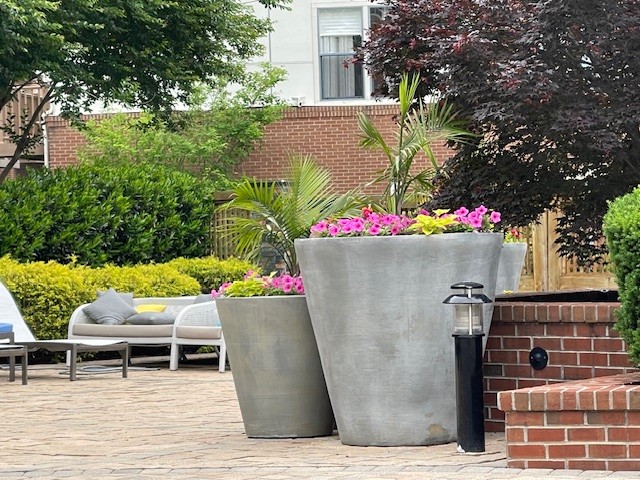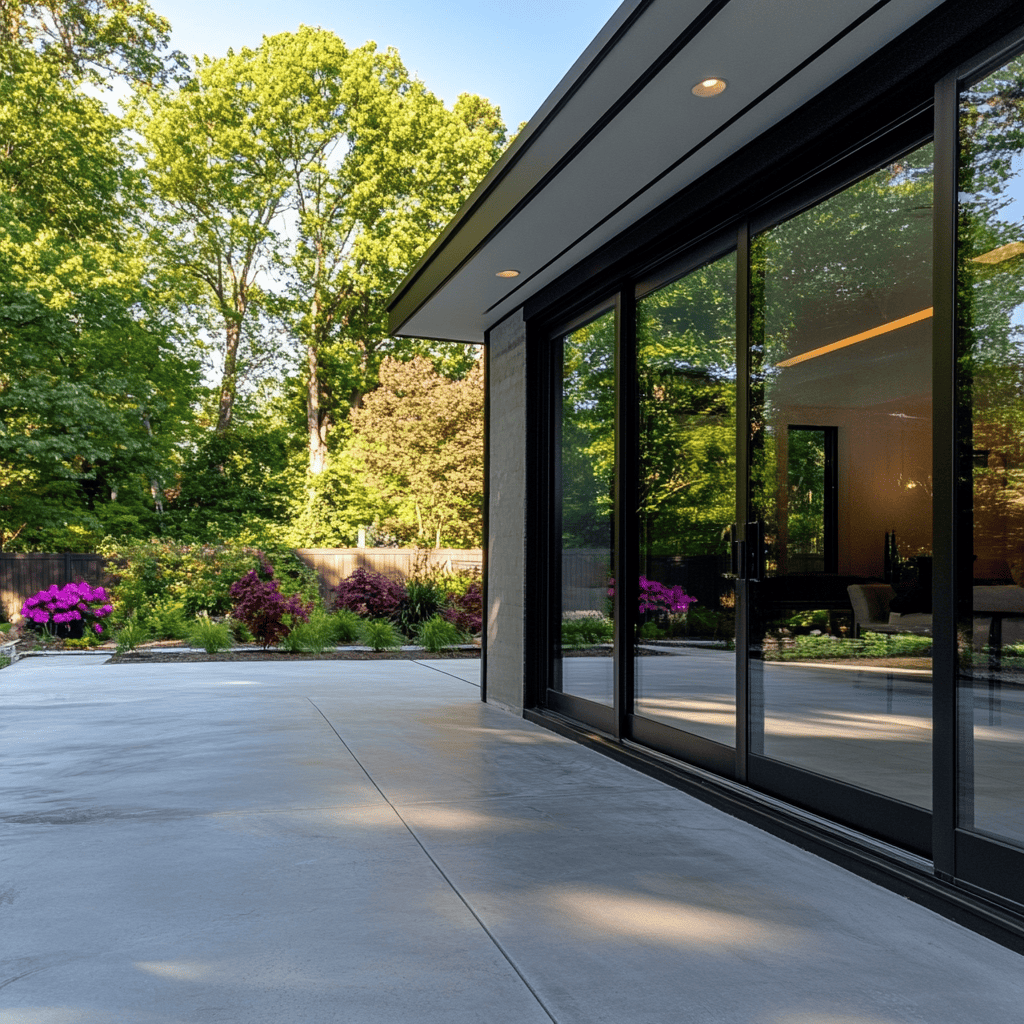WC Landscape provides professional tree limb removal services throughout Centreville, VA, helping property owners maintain healthy trees while protecting their homes and landscapes from potential hazards. Our experienced team combines 40 years of industry expertise with modern equipment and safety protocols to deliver precise limb removal that promotes tree health and eliminates dangerous overhanging branches. Whether you're dealing with storm-damaged limbs, diseased branches, or proactive tree maintenance needs, our certified professionals handle each project with the skill and attention required for successful tree care in Northern Virginia's unique climate conditions.
Tree limb removal requires specialized knowledge of tree biology, proper cutting techniques, and safety procedures that protect both the tree and the surrounding property. Our Centreville-based team serves residential and commercial clients across Virginia Run, Centre Ridge, Sully Station, and surrounding neighborhoods, providing same-day emergency services and scheduled maintenance programs designed to keep your trees healthy and your property safe.



Dead and diseased branches pose serious risks to tree health and property safety, requiring prompt professional removal to prevent further damage and disease spread.
Our certified arborists conduct thorough inspections to identify branches requiring removal, looking for signs including:
Dead and diseased limb removal follows specific protocols to prevent contamination and promote healing:
Removing diseased limbs provides multiple benefits for overall tree health:
Many common tree diseases in Centreville, including fire blight in ornamental trees and various fungal infections in native species, can be effectively managed through prompt removal of affected branches combined with proper sanitation practices.
Centreville's weather patterns, including severe thunderstorms, ice storms, and occasional hurricane impacts, frequently cause limb damage requiring immediate professional attention.
WC Landscape provides 24-hour emergency response for storm-damaged trees that threaten property or safety:
Different storm conditions create specific types of limb damage requiring tailored removal approaches:
Overhanging limbs present ongoing risks to structures, vehicles, and pedestrians, requiring strategic removal that maintains tree health while eliminating hazards.
Professional evaluation identifies the most dangerous overhangs and develops removal strategies that address immediate risks while supporting long-term tree health:
Overhang removal near buildings, decks, and other structures requires specialized techniques:
Low-hanging branches over driveways, sidewalks, and parking areas create liability concerns and practical problems:
Strategic limb removal shapes tree growth patterns and improves structural integrity, reducing future maintenance needs while enhancing tree longevity.
Selective removal of specific limbs improves light penetration and air circulation while maintaining natural tree form:
Young and mature trees benefit from pruning that develops strong branch architecture:
Power line clearance requires specialized knowledge of utility regulations and approved pruning methods:
Proper limb removal requires specific cutting techniques that promote healing while preventing damage to the remaining tree structure.
Professional arborists use the three-cut technique to prevent bark stripping and structural damage:
Proper cut placement requires identifying the branch collar, the swollen area where the branch attaches to the trunk:
Professional limb removal uses specific tools designed for clean, accurate cuts:
Large limb removal near structures or in confined spaces requires advanced rigging methods to control limb descent and prevent property damage.
Professional tree care uses specialized rigging equipment designed for controlled limb lowering:
Different situations require specific rigging approaches:
Tree limb removal involves significant safety risks requiring professional training and equipment to prevent accidents and injuries.
Professional arborists use specialized safety gear designed for tree work hazards:
Limb removal operations require establishing safe work areas, protecting both workers and bystanders:
Regular equipment inspection prevents accidents caused by equipment failure:
Trees respond to limb removal through complex biological processes that can be supported or hindered by removal techniques and timing.
Trees have evolved sophisticated responses to wounding that professional removal techniques are designed to support:
Different species and seasons affect the healing response to limb removal:
Modern arboriculture generally avoids wound dressings, but specific situations may benefit from treatment:
Different tree species have unique characteristics affecting limb removal timing, techniques, and healing responses.
Oak trees, common in Centreville, require specific considerations for limb removal:
Maples respond well to proper pruning but have specific bleeding and timing concerns:
Conifers have different growth patterns and healing mechanisms requiring specialized approaches:
Strategic limb removal supports overall tree health by eliminating pest breeding sites and improving conditions that favor beneficial organisms.
Removing specific limbs can significantly reduce disease pressure:
Selective limb removal disrupts insect life cycles and reduces pest populations:
WC Landscape utilizes industry-standard equipment designed specifically for safe and efficient limb removal operations.
Professional tree access requires specialized gear designed for the unique challenges of working at height:
Sharp, properly maintained cutting tools make clean cuts that heal quickly while reducing worker fatigue:
Large or hazardous limb removal may require specialized equipment:
Modern tree care incorporates technology to improve safety and communication during limb removal operations.
Clear communication between crew members prevents accidents and improves efficiency:
Technology assists in evaluating tree condition and removal needs:
Winter provides optimal conditions for most limb removal operations in Centreville's climate.
Winter timing offers multiple benefits for both trees and removal operations:
Different tree types respond differently to winter removal:
Winter conditions require additional safety considerations:
Spring timing works well for specific situations but requires careful scheduling around tree biology and wildlife activity.
Late winter and early spring provide windows for specific removal needs:
Spring activities must account for tree biology and environmental factors:
Spring conditions affect disease transmission and management:
While winter remains preferred for most removal, certain situations require summer or fall timing.
Heat stress and storm activity create summer removal needs:
Autumn provides opportunities for assessment and planning:
Tree removal and major limb removal in Centreville must comply with local regulations designed to protect community forest resources.
Fairfax County maintains tree protection ordinances affecting limb removal:
Professional removal services ensure compliance with applicable regulations:
Working with licensed professionals provides compliance assurance:
Many Centreville neighborhoods have specific guidelines governing tree maintenance and limb removal.
Typical homeowners association guidelines include:
Different Centreville communities have varying requirements:
WC Landscape provides round-the-clock emergency response for storm-damaged trees threatening property or safety in Centreville.
Emergencies require rapid assessment and action:
Storm response requires specialized preparation and resources:
Major storm events often affect multiple properties simultaneously:
Professional evaluation determines which damaged limbs require immediate removal versus those that can wait for scheduled maintenance.
Multiple factors determine removal urgency:
Tree limb removal costs vary based on multiple factors affecting the complexity and risk involved in specific projects.
Several characteristics determine removal difficulty and pricing:
Investment in professional limb removal provides multiple benefits:
Professional tree maintenance, including proper limb removal, contributes to property value and long-term landscape health.
Well-maintained trees contribute significantly to property values:
Regular limb removal prevents more expensive problems:
Professional tree care reduces liability exposure:
The optimal timing for tree limb removal in Centreville is during the dormant season from November through February, when trees are not actively growing and disease pressure is lowest. This timing minimizes stress on the tree and reduces bleeding from cut surfaces. However, emergencies requiring immediate safety response can be addressed year-round, and certain species may have specific timing requirements based on disease susceptibility or growth patterns.
Tree limb removal costs vary widely based on factors including limb size, height, location, and access difficulty, typically ranging from $150 for small branch removal to several thousand dollars for complex removal of large limbs near structures. Emergency services and projects requiring specialized equipment or extensive rigging command premium pricing. The investment in professional services provides safety, proper technique, insurance protection, and compliance with local regulations that often make it worthwhile compared to attempting removal yourself.
Most routine limb removal doesn't require permits in Centreville, but significant removal affecting large or protected trees may require approval from Fairfax County. Trees over 24 inches in diameter receive protection under county ordinances, and removing major limbs that significantly alter the tree's structure could trigger permit requirements. Many HOAs also have guidelines requiring notification or approval for substantial tree work, so checking with both county offices and your homeowners association before major removal projects is recommended.
While small, low branches under 2 inches in diameter can often be safely removed by homeowners using proper tools and techniques, larger limbs require professional expertise for safety and tree health reasons. Professional removal becomes necessary when limbs are over 6 feet high, larger than 4 inches in diameter, near power lines, or hanging over structures. Improper removal techniques can seriously damage trees, create safety hazards, and result in expensive property damage or personal injury.
Signs indicating limb removal needs include dead or dying foliage, visible decay or hollow areas, cracks in the branch or at attachment points, fungal growth, insect infestation evidence, or structural defects like weak crotches. Limbs hanging over structures, interfering with utilities, or creating safety hazards also require removal. Professional arborists can assess questionable limbs and determine whether removal is necessary or if other treatments might address the problem while preserving the branch.
WC Landscape includes cleanup and disposal in our limb removal services, typically chipping smaller branches into mulch that can be left for client use or removed based on preference. Larger wood pieces can be cut into firewood lengths if desired, or removed entirely for disposal. We follow local regulations for organic waste disposal and can coordinate recycling of wood materials when appropriate. Storm debris removal includes complete cleaning, leaving properties neat and ready for normal use.
Proper limb removal performed by trained professionals using correct techniques promotes tree health rather than harming it. Trees naturally compartmentalize wounds when cuts are made properly just outside the branch collar, and removing problematic limbs often improves overall tree health by eliminating disease, reducing stress, and improving structure. However, removing too many limbs at once or making improper cuts can stress trees and create entry points for decay, which is why professional expertise is valuable for significant removal projects.
Simple limb removal projects involving small, accessible branches can often be completed in 1-2 hours, while complex removal of large limbs requiring rigging and specialized equipment may take a full day or longer. Factors affecting the timeline include limb size and location, access requirements, weather conditions, and cleanup needs. Emergency removal prioritizes safety over speed, and we provide realistic time estimates based on specific project requirements during our initial assessment.
Limb removal typically refers to taking off entire branches for safety, health, or clearance reasons, while pruning involves selective cutting to shape growth, improve structure, or maintain size. Pruning includes various techniques like crown cleaning, thinning, and reduction that may remove portions of limbs rather than entire branches. Both services require understanding tree biology and proper cutting techniques, but removal tends to be more focused on solving specific problems while pruning emphasizes ongoing tree maintenance and improvement.
Strategic limb removal significantly reduces storm damage risk by eliminating weak, dead, or poorly attached branches likely to fail during severe weather. Removing limbs that create excessive weight or wind resistance helps trees withstand storms better, and clearing branches away from structures prevents damage when unexpected failures occur. However, removal should be balanced with tree health needs, as removing too many limbs can make trees more susceptible to wind damage by altering their natural balance and structure.